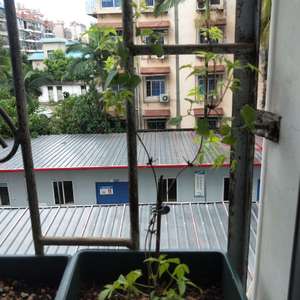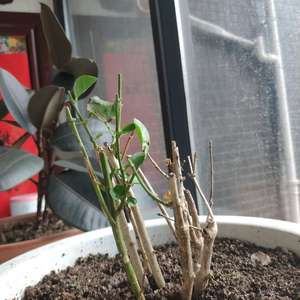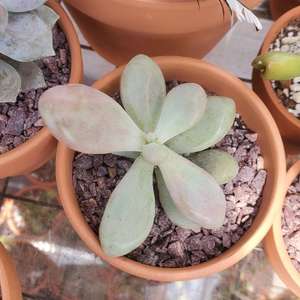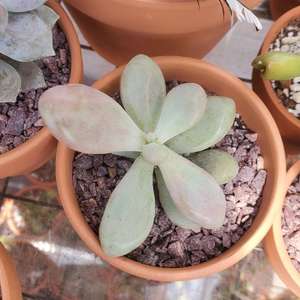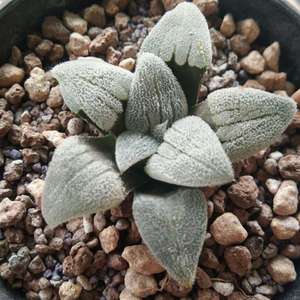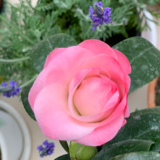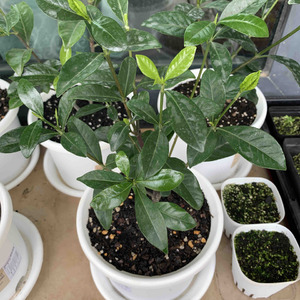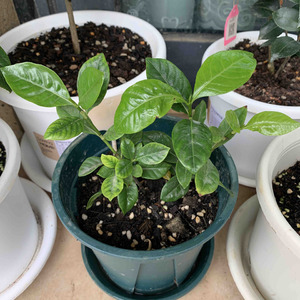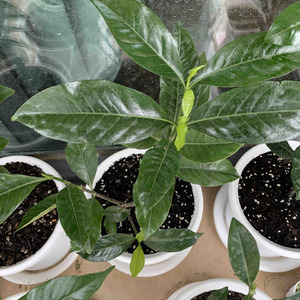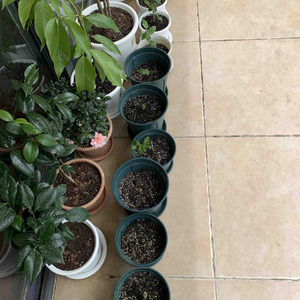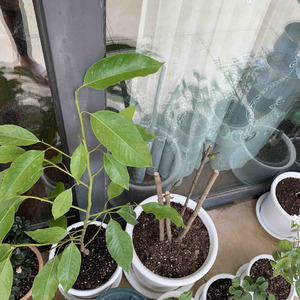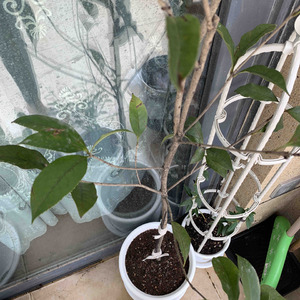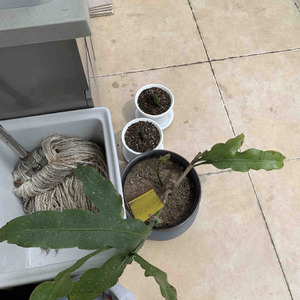文章
ritau
2020年06月22日

*Removing Dead Leaves, Limbs, and Flowers
1. Use sharp scissors or garden shears. Make sure the scissors or garden shears are very sharp, as dull shears can damage the plants. If you notice any dirt on the shears, soak them in water with a teaspoon of bleach and then wipe them dry. A clean tool will ensure your plants are not exposed to bacteria or pests when you prune them.
-You can find garden shears for pruning online or at your local hardware store.
-If you are worried about scratching your hands while you prune, wear gardening gloves.
2. Prune the plants at the beginning of their growing season. If you have houseplants that do not flower, prune them in late winter. For houseplants with flowers or blooms, wait until they have bloomed before you prune them.
- Do not prune houseplants when unopened buds are present on the stems.
3. Remove dead leaves and limbs at a 45 degree angle. Look for any leaves or limbs on the plant that are brown or discolored. They may also appear limp or dry. Use the shears to cut them off just below the brown or dead area at a 45 degree angle. This will ensure you leave as much of the healthy foliage on the plant as possible.
-Do not cut off any leaves or limbs that still appear green and vibrant.
-If a large section of the leafy area appears dead, you can cut off the entire branch. Leave the main stem intact and remove branches shooting off of the stem at a 45 degree angle.
4. Trim off any dead flowers. If you have houseplants that are flowering, make sure you check them over for any dead flowers and remove them. The flowers may appear brown, discolored, and limp. They may also feel dry to the touch. Cut the dead flowers off with the shears at the base of the flower’s head.
-Removing dead and dying flowers on the plant will encourage the growth of newer, more vibrant blooms.
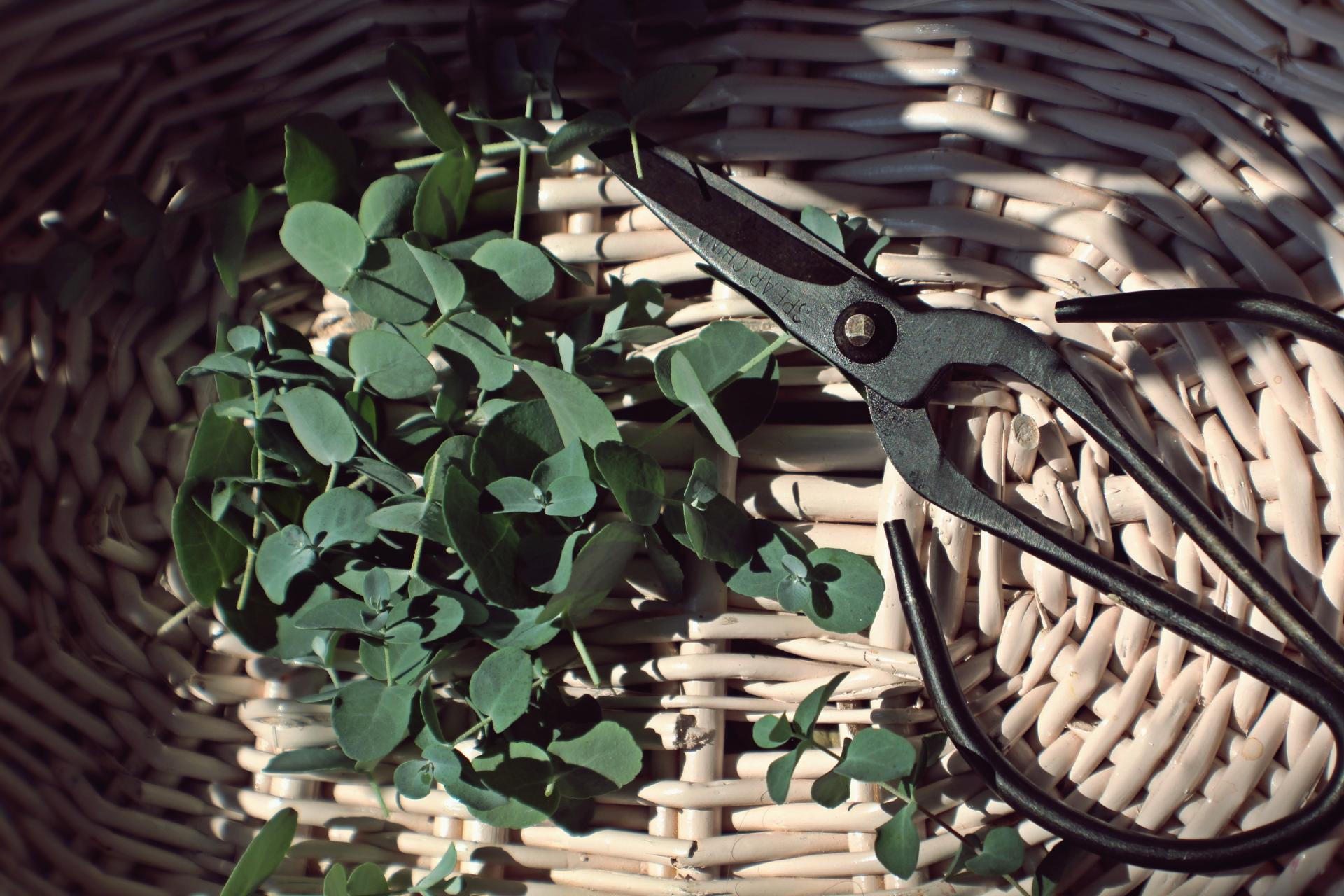
*Cutting Back Overgrown Branches and Stems
1. Prune back half of the longest branches on the plant. Use the shears to cut them back about a third of their length. Trim the branches off at a 45 degree angle.
-If there are any side shoots on the branches further down the base of the plant, you can prune a few of these shoots.
-Do not cut off any nodules on the plants as you prune, which are new buds that have not bloomed or opened yet.
2.Remove leggy stems. Check the plant for any stems that are unusually long. They may appear loose or straggling, falling off different areas of the plant. Pruning leggy stems will help the plant to grow in a fuller, more even pattern. Use the shears to cut the leggy stems back to one third their length, cutting at a 45 degree angle.
3. Pinch off the stems. If you have soft-stemmed houseplants like coleus, heartleaf philodendron, and English ivy, make sure you pinch them regularly. Use your thumb and forefinger to remove the tip of a stem. Pinch above the node, which is the growing point where the leaf is attached to the plant.
- Pinching off the stems can help maintain the bushy shape of the plant and encourage even growth. It also helps to prevent the growth of leggy stems.

4. Remove 10-20% of the plant’s foliage at a time. Do not over prune the plant, as this can make it difficult for it to grow properly. Make selective cuts to the plant, removing only 10-20% of the foliage at a time. Wait a few weeks to one month to prune the plants again.
-Always leave some foliage on the plant when you prune. If you are in doubt, under prune the plant and then reevaluate it a few weeks later.
1. Use sharp scissors or garden shears. Make sure the scissors or garden shears are very sharp, as dull shears can damage the plants. If you notice any dirt on the shears, soak them in water with a teaspoon of bleach and then wipe them dry. A clean tool will ensure your plants are not exposed to bacteria or pests when you prune them.
-You can find garden shears for pruning online or at your local hardware store.
-If you are worried about scratching your hands while you prune, wear gardening gloves.
2. Prune the plants at the beginning of their growing season. If you have houseplants that do not flower, prune them in late winter. For houseplants with flowers or blooms, wait until they have bloomed before you prune them.
- Do not prune houseplants when unopened buds are present on the stems.
3. Remove dead leaves and limbs at a 45 degree angle. Look for any leaves or limbs on the plant that are brown or discolored. They may also appear limp or dry. Use the shears to cut them off just below the brown or dead area at a 45 degree angle. This will ensure you leave as much of the healthy foliage on the plant as possible.
-Do not cut off any leaves or limbs that still appear green and vibrant.
-If a large section of the leafy area appears dead, you can cut off the entire branch. Leave the main stem intact and remove branches shooting off of the stem at a 45 degree angle.
4. Trim off any dead flowers. If you have houseplants that are flowering, make sure you check them over for any dead flowers and remove them. The flowers may appear brown, discolored, and limp. They may also feel dry to the touch. Cut the dead flowers off with the shears at the base of the flower’s head.
-Removing dead and dying flowers on the plant will encourage the growth of newer, more vibrant blooms.

*Cutting Back Overgrown Branches and Stems
1. Prune back half of the longest branches on the plant. Use the shears to cut them back about a third of their length. Trim the branches off at a 45 degree angle.
-If there are any side shoots on the branches further down the base of the plant, you can prune a few of these shoots.
-Do not cut off any nodules on the plants as you prune, which are new buds that have not bloomed or opened yet.
2.Remove leggy stems. Check the plant for any stems that are unusually long. They may appear loose or straggling, falling off different areas of the plant. Pruning leggy stems will help the plant to grow in a fuller, more even pattern. Use the shears to cut the leggy stems back to one third their length, cutting at a 45 degree angle.
3. Pinch off the stems. If you have soft-stemmed houseplants like coleus, heartleaf philodendron, and English ivy, make sure you pinch them regularly. Use your thumb and forefinger to remove the tip of a stem. Pinch above the node, which is the growing point where the leaf is attached to the plant.
- Pinching off the stems can help maintain the bushy shape of the plant and encourage even growth. It also helps to prevent the growth of leggy stems.

4. Remove 10-20% of the plant’s foliage at a time. Do not over prune the plant, as this can make it difficult for it to grow properly. Make selective cuts to the plant, removing only 10-20% of the foliage at a time. Wait a few weeks to one month to prune the plants again.
-Always leave some foliage on the plant when you prune. If you are in doubt, under prune the plant and then reevaluate it a few weeks later.
0
0
文章
Miss Chen
2020年06月09日

吹雪之松是一种多肉植物,这种植物最高可以长到五厘米左右,而且叶片的颜色是绿色的,有一定的耐旱能力,耐高温能力也不错,那么吹雪之松多肉徒长怎么办?
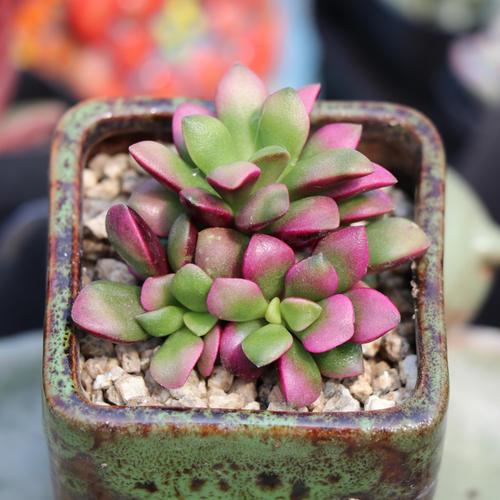
1如果解决吹雪之松多肉徒长
如果吹雪之松多肉出现徒长,可以选择砍头处理,要知道,一旦吹雪之松徒长,它的茎部就会变的非常纤细,我们必须要及时处理,可以准备一个经过消毒的工具,用它来砍头,砍头的时候,只要把过长的枝条剪掉即可,这样吹雪之松就矮化了。
但砍下来的吹雪之松,是不可以马上扦插的,需要把吹雪之松放到阴凉位置通风晾干,然后准备透气、排水性好的土壤,直接把枝条插进入即可,当然后期的管理也非常重要,一般好好培育,过一段时间之后,我们就可以看到新的吹雪之松了。

2小编点评
吹雪之松多肉徒长,需要找到徒长的原因,一般额可能是因为缺少光照导致的,如果长期在阴暗的环境里生长,它就会徒长,枝条过程,此时,我们需要需要增加光照,养护在有阳光散射的位置,直接放到阳台养护也可以;吹雪之松多肉徒长,还有可能是因为水浇多了,根部不能完全吸收水分,就会有徒长,所以要做好排水工作。

1如果解决吹雪之松多肉徒长
如果吹雪之松多肉出现徒长,可以选择砍头处理,要知道,一旦吹雪之松徒长,它的茎部就会变的非常纤细,我们必须要及时处理,可以准备一个经过消毒的工具,用它来砍头,砍头的时候,只要把过长的枝条剪掉即可,这样吹雪之松就矮化了。
但砍下来的吹雪之松,是不可以马上扦插的,需要把吹雪之松放到阴凉位置通风晾干,然后准备透气、排水性好的土壤,直接把枝条插进入即可,当然后期的管理也非常重要,一般好好培育,过一段时间之后,我们就可以看到新的吹雪之松了。

2小编点评
吹雪之松多肉徒长,需要找到徒长的原因,一般额可能是因为缺少光照导致的,如果长期在阴暗的环境里生长,它就会徒长,枝条过程,此时,我们需要需要增加光照,养护在有阳光散射的位置,直接放到阳台养护也可以;吹雪之松多肉徒长,还有可能是因为水浇多了,根部不能完全吸收水分,就会有徒长,所以要做好排水工作。
0
0
文章
Miss Chen
2020年06月08日

口笛是一种根系并不发达的多肉品种,在种植它的时候,想要让它快速发根,最好潮土上盆,种下之后不用立刻浇水,只要将它放在明亮的散光处等待它生根就可以了。具体内容如下:

1多肉口笛的发根方法有哪些
多肉口笛在养护的时候,应该对它的根系进行修根,像是长的较长或是比较弱小的根系都修剪掉。然后应该将它潮土上盆,种植后不用立刻为它浇水,只要将它放在散光处养护就可以了。
多肉口笛并不是一种根系发达的植物,所以我们在养护口笛的时候,最好是放在通风环境中进行养护,在它发根的过程中,如果土壤过于干燥的话,则可以沿着盆壁适当为它少量浇一次水。这样养护一段时间后,多肉口笛就会逐渐生根服盆,然后逐渐将它放在阳光较好的地方养护就可以了。
多肉口笛在刚上盆的时候,最好不要经常去拨弄它,因为口笛在发根不好的情况下,一拔就容易离开土壤了,大家要多一些耐心等待。

2小编点评:
很多人在种植口笛多肉的时候,往往种植了很长时间还没有服盆。有经验的花友提供了一个技巧,就是颗粒土种植,大水发根。很多人怕烂根不敢浇水,但这样做是不对的,应该潮土上盆,然后土壤干了就浇大水,一般一个星期浇灌一次,很快就会服盆发根了。

1多肉口笛的发根方法有哪些
多肉口笛在养护的时候,应该对它的根系进行修根,像是长的较长或是比较弱小的根系都修剪掉。然后应该将它潮土上盆,种植后不用立刻为它浇水,只要将它放在散光处养护就可以了。
多肉口笛并不是一种根系发达的植物,所以我们在养护口笛的时候,最好是放在通风环境中进行养护,在它发根的过程中,如果土壤过于干燥的话,则可以沿着盆壁适当为它少量浇一次水。这样养护一段时间后,多肉口笛就会逐渐生根服盆,然后逐渐将它放在阳光较好的地方养护就可以了。
多肉口笛在刚上盆的时候,最好不要经常去拨弄它,因为口笛在发根不好的情况下,一拔就容易离开土壤了,大家要多一些耐心等待。

2小编点评:
很多人在种植口笛多肉的时候,往往种植了很长时间还没有服盆。有经验的花友提供了一个技巧,就是颗粒土种植,大水发根。很多人怕烂根不敢浇水,但这样做是不对的,应该潮土上盆,然后土壤干了就浇大水,一般一个星期浇灌一次,很快就会服盆发根了。
0
0
文章
Miss Chen
2020年06月08日

蛛丝卷绢是一种多肉植物,养护它的人比较少,形状也比较怪异,养护蛛丝卷绢的过程中,容易长出侧芽,那么出现侧芽怎么处理好呢?

1蛛丝卷绢侧芽如何处理
我们在处理蛛丝卷绢侧芽的时候,可以采用分株的方式,还要选择合适的时间,一般在春秋两季最合适,这两个季节,是蛛丝卷绢生长最旺盛的时候,这个时候进行修剪,伤口愈合的速度也比较快。
我们要准备工具,然后把工具消毒,用工具把蛛丝卷绢分成几丛之后,用多菌灵浸泡,放到阴凉位置晾晒,这样干了之后就可以扦插了,扦插的土壤必须是透气性好、肥沃的土壤,这样成活率会高一些;把蛛丝卷绢侧芽插入准备好的土壤中后,放到阴凉位置养护,这样过一段时间就可以长出根系了。

2小编点评
我们在处理好蛛丝卷绢侧芽之后,需要把它放到光照充足的位置,但阳光不能直射,适当的散光即可,同时还要做好水肥管理,这样过一段时间,就会有新的会蛛丝卷绢长出来,虽然小编没有养护过蛛丝卷绢,但不论什么植物,在养护的时候,无非就是要注意适当的阳光,浇水的时候,也要适量,施肥需要注意浓度,温度忽高忽低等。

1蛛丝卷绢侧芽如何处理
我们在处理蛛丝卷绢侧芽的时候,可以采用分株的方式,还要选择合适的时间,一般在春秋两季最合适,这两个季节,是蛛丝卷绢生长最旺盛的时候,这个时候进行修剪,伤口愈合的速度也比较快。
我们要准备工具,然后把工具消毒,用工具把蛛丝卷绢分成几丛之后,用多菌灵浸泡,放到阴凉位置晾晒,这样干了之后就可以扦插了,扦插的土壤必须是透气性好、肥沃的土壤,这样成活率会高一些;把蛛丝卷绢侧芽插入准备好的土壤中后,放到阴凉位置养护,这样过一段时间就可以长出根系了。

2小编点评
我们在处理好蛛丝卷绢侧芽之后,需要把它放到光照充足的位置,但阳光不能直射,适当的散光即可,同时还要做好水肥管理,这样过一段时间,就会有新的会蛛丝卷绢长出来,虽然小编没有养护过蛛丝卷绢,但不论什么植物,在养护的时候,无非就是要注意适当的阳光,浇水的时候,也要适量,施肥需要注意浓度,温度忽高忽低等。
0
0
文章
Miss Chen
2020年06月07日

劳尔也是一种多肉植物,一般繁殖的时候,会选择用叶插的方式,当然播种的方式也是可以的,来看一下劳尔多肉具体繁殖方法:

1劳尔多肉如何繁殖
如果选择用叶插的方式繁殖,可以从劳尔多肉上选择一个健壮的叶片,然后轻轻摇晃,把选择好的叶片取下来,把叶片放到土壤上,但叶面需要朝上,大概十五到三十天左右就可以出芽,等到小芽长出来之后,直接移栽就可以了。
劳尔多肉在播种方式繁殖就比较简单了,直接把它播种在育苗盆中,然后在上面盖一层塑料布即可,等它出苗之后就可以把塑料布拿下来了,其实劳尔多肉的品种也比较多,观赏价值也比较高,养护的好,它还会开出花朵,而且花朵比较小,什么样的颜色都有。

2小编点评
劳尔多肉繁殖方法无非就是以上两种,但我们不论采用什么方式繁殖,都需要注意光照、浇水等问题,劳尔多肉喜欢阳光,在光照良好的环境里会生长的更好,但在夏季天气特别热的时候,还要给劳尔遮阴,避免劳尔多肉死亡,给劳尔多肉浇水,需要根据它的生长情况进行浇水,正常来说,五天浇次水即可,半个月施次肥。

1劳尔多肉如何繁殖
如果选择用叶插的方式繁殖,可以从劳尔多肉上选择一个健壮的叶片,然后轻轻摇晃,把选择好的叶片取下来,把叶片放到土壤上,但叶面需要朝上,大概十五到三十天左右就可以出芽,等到小芽长出来之后,直接移栽就可以了。
劳尔多肉在播种方式繁殖就比较简单了,直接把它播种在育苗盆中,然后在上面盖一层塑料布即可,等它出苗之后就可以把塑料布拿下来了,其实劳尔多肉的品种也比较多,观赏价值也比较高,养护的好,它还会开出花朵,而且花朵比较小,什么样的颜色都有。

2小编点评
劳尔多肉繁殖方法无非就是以上两种,但我们不论采用什么方式繁殖,都需要注意光照、浇水等问题,劳尔多肉喜欢阳光,在光照良好的环境里会生长的更好,但在夏季天气特别热的时候,还要给劳尔遮阴,避免劳尔多肉死亡,给劳尔多肉浇水,需要根据它的生长情况进行浇水,正常来说,五天浇次水即可,半个月施次肥。
0
0
文章
Miss Chen
2020年06月07日

为了让金枝玉叶的养分更加充足, 花友会定期给金枝玉叶换盆,而换盆之后的养护也非常重要,特别是在浇水方面,那么金枝玉叶换盆后什么时候可以浇水?

1金枝玉叶换盆后多久可以浇水
我们给金枝玉叶换盆之后,后期的管理非常重要,正常来说,金枝玉叶换盆之后,需要有缓苗的时间,只有等到金枝玉叶彻底服盆之后,才能正常的养护,对于重新上盆的金枝玉叶来说,是不可以见强光的,叶片也不能被直射,容易影响其生长,需要把金枝玉叶放到通风位置好的地方,我们给金枝玉叶换盆的时候,需要使用湿润一些的土壤,所以给金枝玉叶换盆之后,是不可以马上就浇水的,需要等四五天。
这个时候给金枝玉叶浇水,需要根据实际情况来决定,看看土壤的干湿情况,如果不是特别干燥,可以浇微量的水,让土壤处于微微湿润状态,如果土壤不干,就不用浇水了。

2小编点评
给金枝玉叶浇水,一次性不要浇太多,特别是在服盆期间,一般在换盆十五到二十天之后,正常给金枝玉叶浇水即可,但浇水的时候,需要用很细的孔来喷灌,这样对金枝玉叶根部生长有利,同时给金枝玉叶浇水,需要注意时间,一般在早晨或者晚上是最好的,在雨季的时候,就不用浇水了。

1金枝玉叶换盆后多久可以浇水
我们给金枝玉叶换盆之后,后期的管理非常重要,正常来说,金枝玉叶换盆之后,需要有缓苗的时间,只有等到金枝玉叶彻底服盆之后,才能正常的养护,对于重新上盆的金枝玉叶来说,是不可以见强光的,叶片也不能被直射,容易影响其生长,需要把金枝玉叶放到通风位置好的地方,我们给金枝玉叶换盆的时候,需要使用湿润一些的土壤,所以给金枝玉叶换盆之后,是不可以马上就浇水的,需要等四五天。
这个时候给金枝玉叶浇水,需要根据实际情况来决定,看看土壤的干湿情况,如果不是特别干燥,可以浇微量的水,让土壤处于微微湿润状态,如果土壤不干,就不用浇水了。

2小编点评
给金枝玉叶浇水,一次性不要浇太多,特别是在服盆期间,一般在换盆十五到二十天之后,正常给金枝玉叶浇水即可,但浇水的时候,需要用很细的孔来喷灌,这样对金枝玉叶根部生长有利,同时给金枝玉叶浇水,需要注意时间,一般在早晨或者晚上是最好的,在雨季的时候,就不用浇水了。
0
0



